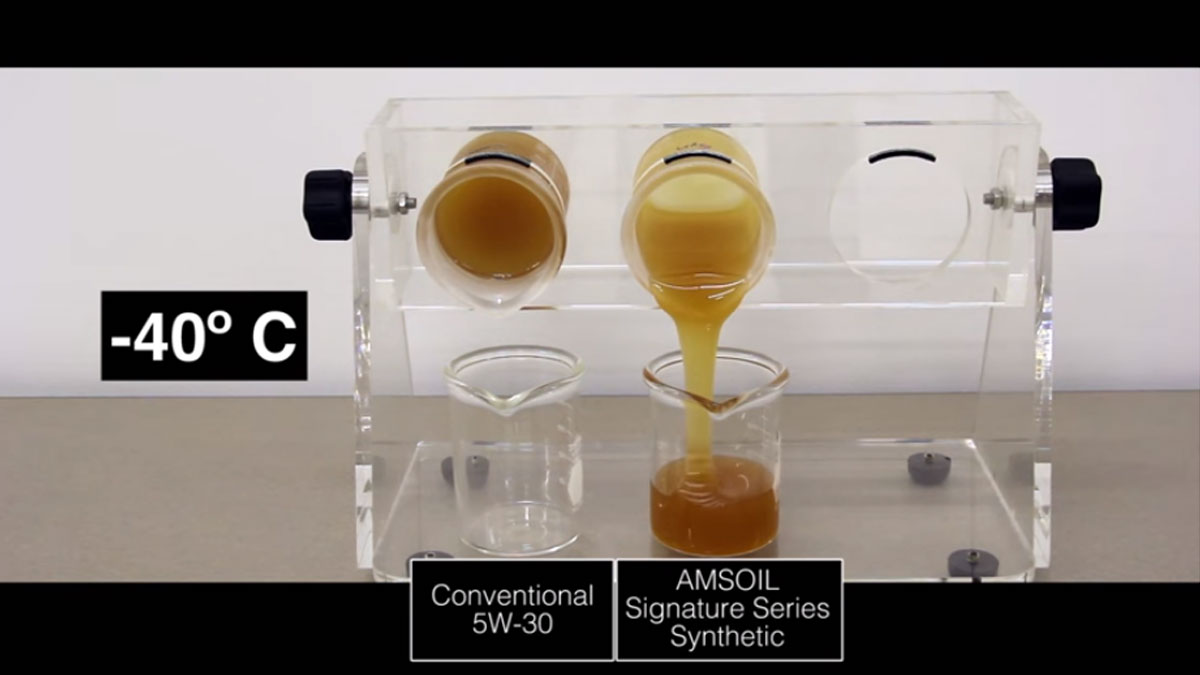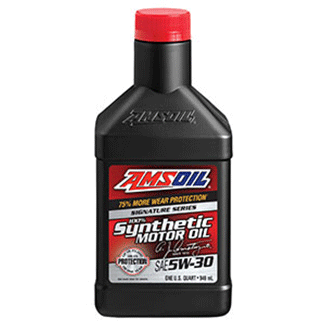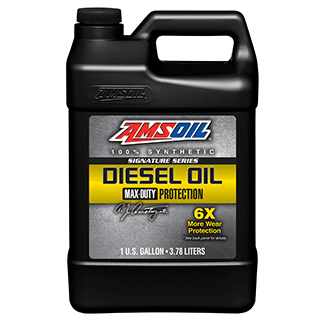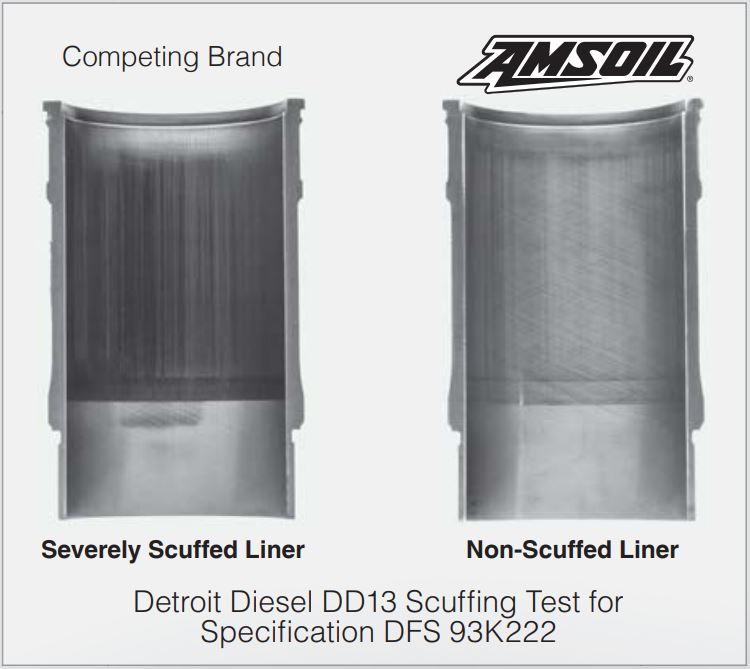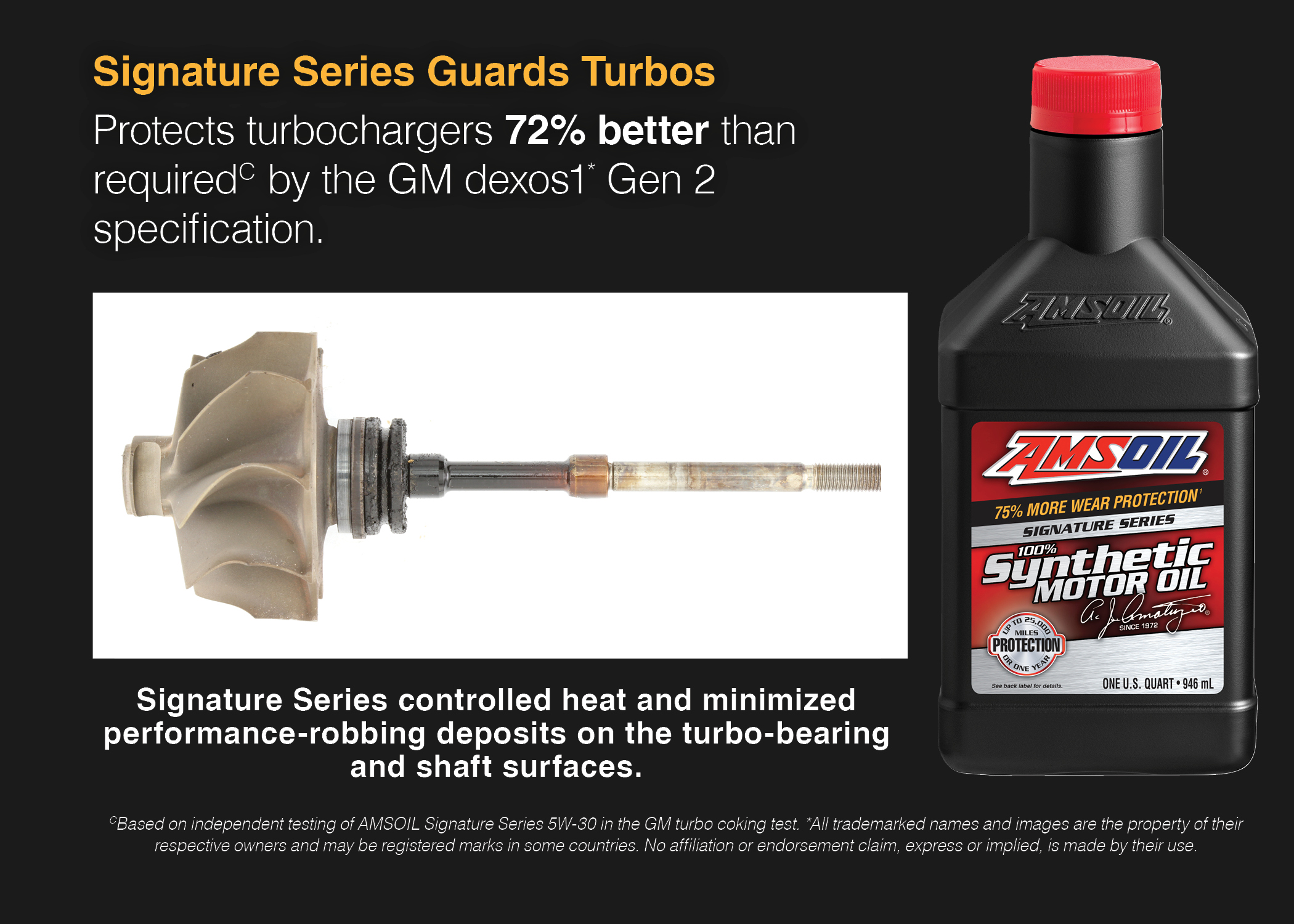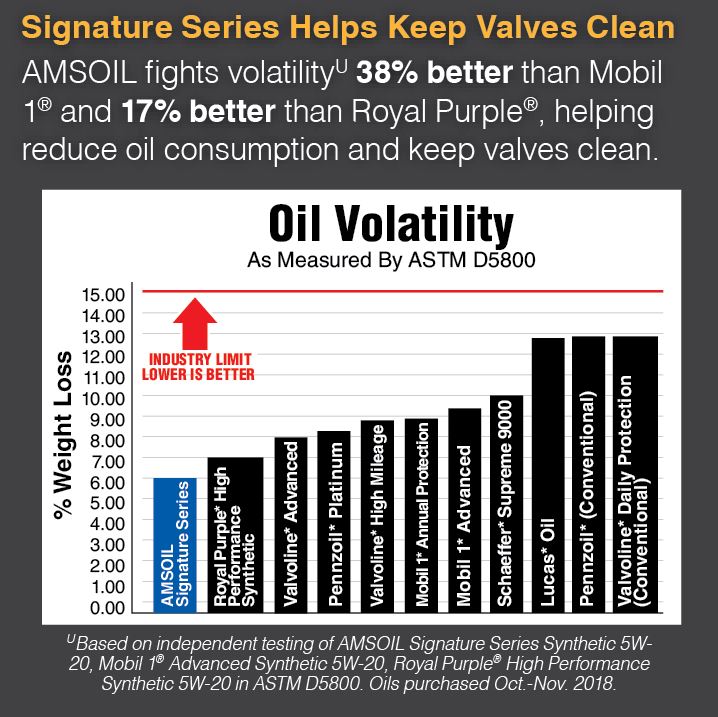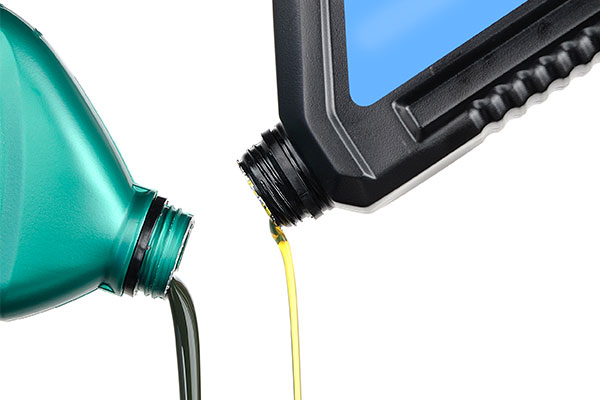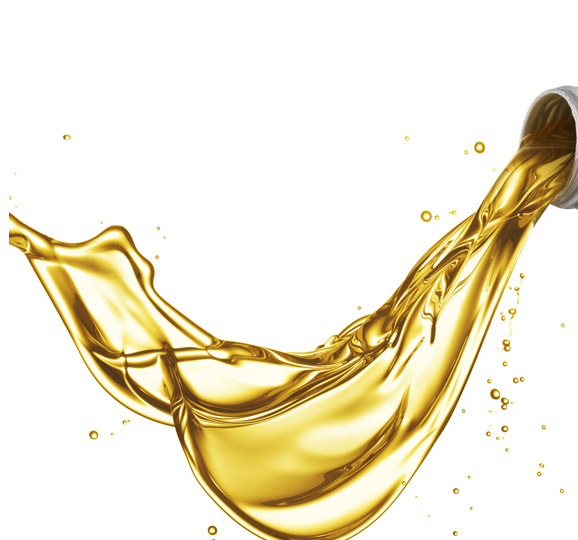Is Synthetic Oil Better Than Conventional Oil?
Yes. Thank you, next?
Seriously, though, if you’ve read this far you can arrive at the answer yourself.
Synthetic motor oil is made using pure, uniform chemicals. As such, it imparts benefits conventional motor oils just can’t touch. It makes perfect sense. Just about anything manufactured with better components is going to provide better performance and last longer – an automotive engine, smartphone, pair of shoes – you name it.
Synthetic Oil vs Conventional Oil Test
But, don’t take our word for it.
The American Automobile Association (AAA) conducted a study to determine if, in fact, synthetic oil outperformed conventional oil and was worth the extra up-front price.
Here’s what John Nielsen, AAA’s managing director of Automotive Engineering and Repair, said following the synthetic oil vs. conventional oil test:
“Oil protects critical engine components from damage and AAA found that synthetic engine oils performed an average of 47 percent better than conventional oils in a variety of industry-standard tests. With its superior resistance to deterioration, AAA’s findings indicate that synthetic oil is particularly beneficial to newer vehicles with turbo-charged engines and for vehicles that frequently drive in stop-and-go traffic, tow heavy loads or operate in extreme hot or cold conditions.”
Those conditions apply to just about any vehicle on the road today.
Our own testing versus conventional oil confirms the AAA’s findings. For example…
- AMSOIL Signature Series 5W-30 showed 38% less oil consumption than the tested conventional oil, requiring less-frequent top-offs, in the ASTM D5800 Noack volatility test.
- AMSOIL keeps engines 81% cleaner (5 times cleaner) than conventional oil by better resisting the formation of deposits (supported by TEOST 33C test [ASTM D6335]).
Benefits of Synthetic Oil
We’ve established (and so has the AAA) that synthetic oil outperforms conventional oil in testing. So, what benefits might drivers expect after switching to synthetic oil?
Improved Engine Protection
Wear protection is the number-one benefit motorists demand from motor oil. If motor oil could make your car fly, but couldn’t keep components from wearing out and failing, what good would it be?
Synthetic motor oil does a better job protecting against engine wear. It forms a stronger fluid film to help keep metal components from contacting and wearing against each other. It also offers improved resistance to heat and viscosity loss, two features that translate into better wear protection.
Want proof? Consider the performance of AMSOIL Signature Series Synthetic Motor Oil against a leading synthetic-blend motor oil (more on synthetic-blends later).
What About Protection in Diesel Engines?
Again, the evidence shows the superiority of synthetic motor oil in guarding against wear in diesel engines.
AMSOIL Signature Series Max-Duty Synthetic Diesel Oil provides 6X more engine protection than required by the Detroit Diesel DD13 Scuffing Test for Specification DFS 93K222 using 5W-30 as worst-case representation.
Improved Cold-Temperature Performance
When the temperature drops, motor oil thickens and moves slower, causing parts of your engine to remain unprotected for a short period of time. It’s especially problematic with conventional oils since they contain waxes that thicken in the cold.
Synthetics, on the other hand, don’t contain waxes, meaning they remain more fluid in the cold. This means synthetics can reach vital components faster, providing more immediate engine protection and reduced wear. Simply said, synthetic oils offer better cold-weather protection.
See for yourself in the video.
Improved High-Temperature Protection
Engines get hot. In fact, they run hotter than ever thanks to the proliferation of turbochargers and direct fuel injection, which help automakers achieve today’s strict fuel-economy standards.
Turbos can spin up to 300,000 rpm, while the exhaust gases that drive the turbine can hit 1,000ºF (538ºC). The extreme speed combined with the blistering heat can lead to deposit buildup, known as turbo coking, which can ruin the turbo. Turbo coking occurs when oil is left in the turbo and the engine is shut off hot. The heat cooks the oil inside the turbo and leaves behind deposits.
Look at the image. That glowing chunk of metal is a turbocharger.
It’s up to the motor oil to prevent that from happening. And conventional oils simply aren’t cut out for the task. They contain unstable, light molecules that vaporize when exposed to extreme heat.
Synthetics, in contrast, offer improved extreme-heat resistance, thus they’re the better choice for today’s hot-running engines. In fact, turbo protection is so important that General Motors requires oils to pass its Turbo Coking Test to be recommended for its GM dexos1® Gen 2 motor oil specification.
We decided to put AMSOIL Signature Series Synthetic Motor Oil to the test. How did it perform? See for yourself.
Maximum Fuel Economy
Earlier we talked about how conventional oil thickens when it’s cold. Not only does thick, cold oil affect wear protection, it wastes energy. This, in turn, requires the engine to use more fuel. Because synthetics flow readily at start up, synthetic oils maximize fuel economy.
In addition, modern low-viscosity oils, like 0W-20, flow more readily than the 10W-40 oils vehicles once used. This, in turn, boosts fuel economy. But formulators must use synthetic base oils to manufacture low-viscosity oils that provide good protection in all areas important to your engine.
Reduced Oil Consumption
Several factors can cause your engine to increase motor oil consumption. Most are mechanical, including…
- Leaking seals or gaskets
- Stuck or worn piston rings
- Worn or damaged bearings
- Clogged PCV valve
If your engine uses oil due to mechanical defects, visit a mechanic and have them fixed.
However, motor oil volatility can also contribute to oil consumption. Volatility defines a lubricant’s evaporative loss. The more volatile the lubricant, the higher the tendency to evaporate and exit the engine through the crankcase ventilation system.
The more it evaporates, the less oil is left to protect equipment and the more often a user must replace the lost oil.
The small, light molecules in conventional lubricants evaporate at relatively low temperatures. These light molecules require less energy in the form of heat than heavier molecules to be lifted out of the solution and into the air.
Volatility Affects More Than Oil Consumption
When light elements in oil evaporate from heat, the oil’s viscosity increases. This thicker oil forces the engine to work harder, resulting in several problems, including the following:
- Performance loss
- Fuel economy loss
- Poor cold-temperature starting
- Increased engine deposits
The solution is to use an oil that’s stable in the presence of heat and resists oil consumption. Synthetic oils offer naturally better resistance to heat and volatility. As a result, they help reduce oil consumption to keep your engine clean and running strong.
For example, AMSOIL Max-Duty Synthetic Diesel Oil provides up to 76% less oil consumption than required by the API CK-4 standard in the Caterpillar-1N oil consumption test.
AMSOIL reduces oil consumption in gasoline engines, too, as this graph shows.
How Often Should I Change Synthetic Oil?
It stands to reason that synthetic motor oil will last longer than conventional oil due to its superior performance. That’s true, but how long does synthetic motor oil last?
It depends on the oil itself and your operating conditions.
While synthetics in general outperform conventional oil, some synthetics are better than others. That means some will last longer than others.
Most synthetics can last 8,000-10,000 miles. But some synthetics today are recommended for drain intervals up to 25,000 miles or one year. AMSOIL Signature Series Synthetic Motor Oil, for example, is guaranteed for 25,000 miles/one year/700 hours, whichever comes first, in normal service. Changing oil once a year reduces waste oil and packaging considerably. Plus, it reduces time and money spent changing oil.
Oil Quality Helps Determine its Service Life
How long synthetic oil can last depends on its base oil and additive quality.
It also depends on whether your driving conditions fall under the severe or normal designation.
Excessive idling; frequent towing, hauling or plowing; or driving in dusty conditions are examples of severe conditions that can reduce the oil’s drain interval.
Excessive idling, elevated heat, stress and other factors contribute to how long synthetic oil will last.
We recommend that you follow the oil-change guidelines given in your owner’s manual or on the motor oil label.
Some synthetics are recommended for extended drain intervals beyond what’s given in the owner’s manual.
Extending drain intervals in this way allows you to safely change oil less often while spending less on oil over the long haul, if you choose.
AMSOIL Signature Series (mentioned above) is one example. Its diesel counterpart, AMSOIL Signature Series Max-Duty Synthetic Diesel Oil, is another. In certain applications, it’s recommended for up to 3X the original equipment manufacturer drain interval, not to exceed 60,000 miles/600 hours of service or one year, whichever comes first. Check out AMSOIL oil change intervals here.
Used oil analysis is the best method of determining how long your motor oil can last. It involves submitting an oil sample to a laboratory, where technicians analyze its condition for the presence of wear metals, coolant, fuel and other contaminants.
Oil analysis is the most efficient way to determine exactly how long your oil will last and when it needs changing.
Synthetic vs Conventional Oil Change Interval
Remember the 3,000-mile oil change? Some quick lubes and shade-tree mechanics may still promote the practice as “cheap insurance” against engine wear.
Wanting the best for your engine is a noble idea, but throwing out perfectly good motor oil benefits no one (except the company selling you the new oil).
The 3,000-mile oil-change interval was adopted and amplified in the 1970s by quick lubes (many of which were owned by oil companies). While they may have had their customers’ best interests in mind, it didn’t hurt that the practice also ensured repeat business.
Those days are over.
Just like vehicles no longer require carburetor adjustments, new ignition points or water in their battery, they don’t require oil changes every 3,000 miles (barring extreme operating conditions).
Motor oil technology has advanced in lockstep with automotive technology, meaning oils today commonly last longer than the traditional 3,000 miles. As mentioned above, some synthetics offer the ability to extend oil drain intervals if you choose, saving time and money.
Can You Mix Conventional Oil With Synthetic Oil?
Yes, you can mix conventional oil with synthetic oil.
There is no danger in mixing the two. Synthetic-blend motor oil, for example, which is readily available at any parts store, is nothing but conventional and synthetic oil already mixed in the bottle.
Mixing the two, however, will only detract from the synthetic oil’s superior performance and reduce its benefits.
It’s not a great idea to mix conventional and synthetic motor oil unless you have no choice. If you’re travelling, for example, and notice the engine low on oil, the convenience store alongside the road may only sell conventional oil. In these cases, we recommend draining the oil at your earliest convenience and refilling with synthetic motor oil.
What is Synthetic-Blend Motor Oil?
We alluded to the answer above: it’s nothing more than motor oil that’s formulated using both conventional and synthetic base oils. Synthetic-blend motor oil is also referred to as semi-synthetic.
Synthetic-blend motor oils fall in between conventional oil and synthetic oil on the motor oil spectrum. The idea behind them is to offer motorists a taste of the improved performance of a full synthetic at a price closer to a conventional oil. Oil marketers see them as a stepping-stone product to help encourage motorists to eventually step up to a full synthetic.
The biggest question surrounding synthetic-blend motor oil is, “How much ‘synthetic’ is in my oil?” Does the oil in the bottle include 1% synthetic base oils? 10%? 30%? There’s no way to know.
Check out this post for more on “How much ‘synthetic’ is in my oil?”
The higher the synthetic content, the better the oil should perform.
Full Synthetic Oil vs Synthetic Blend
Unfortunately for motorists, there are no industry specifications or regulations that define the minimum percentage of synthetic components for a synthetic-blend to be classified as such. It varies depending on each manufacturer, and they’re not going to divulge that information since it would give their competition an advantage.
That being the case, astute motorists can look for a few clues to help interpret the amount and quality of the synthetic base oils in your synthetic-blend motor oil.
Visit the oil manufacturer’s website and find the oil’s technical data sheet (also called a “product data sheet”). Find the section labeled “Typical Technical Properties,” or some derivative of such. Look for these two values:
- Viscosity Index: Oils with a higher number include a better synthetic base oil that provides more protection to critical components over a wide temperature range by maintaining fluid thickness and the necessary fluid barrier between parts.
- Pour Point: measures the oil’s fluidity at cold temperatures and refers to the lowest temperature at which oil maintains its ability to flow. Lower numbers are likely to indicate a better synthetic base oil.
You should know, however, that an oil’s base oil composition is only part of what determines its performance. The additives also play a large role in fighting wear and deposits.



